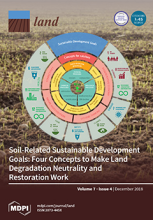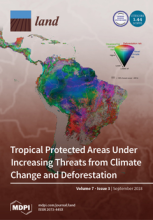Land Library
Welcome to the Land Portal Library. Explore our vast collection of open-access resources (over 74,000) including reports, journal articles, research papers, peer-reviewed publications, legal documents, videos and much more.
/ library resources
Showing items 28 through 36 of 49.Uganda designated 16% of its land as Protected Area (PA). The original goal was natural resources, habitat and biodiversity conservation. However, PAs also offer great potential for carbon conservation in the context of climate change mitigation.
Centuries of colonization of the Atlantic Forest biome in Brazil have led its native vegetation cover to be reduced to only 11.7%. On the other hand, regional land changes have fostered natural forest regeneration, since the 1960s, in the region of Paraíba Valley.
Small protected areas dominate some databases and are common features of landscapes, yet their accumulated contributions to biodiversity conservation are not well known.
Indigenous knowledge about biodiversity and conservation is valuable and can be used to sustainably manage protected areas; however, indigenous communities continue to be marginalized due to the belief that their values and behaviors do not align with the overarching mission of conservation.
Understanding the patterns and drivers of land use and land cover (LULC) changes is fundamental for rational and specific planning for sustainable land management.
Biodiversity hotspots are rich in endemic species and threatened by anthropogenic influences and, thus, considered priorities for conservation.
At present, 10.5% of Canada’s land base is under some form of formal protection. Recent developments indicate Canada aims to work towards a target of protecting 17% of its terrestrial and inland water area by 2020.
Forests, particularly in the tropics, are suffering from deforestation and forest degradations.
Identifying protected areas most susceptible to climate change and deforestation represents critical information for determining conservation investments.


